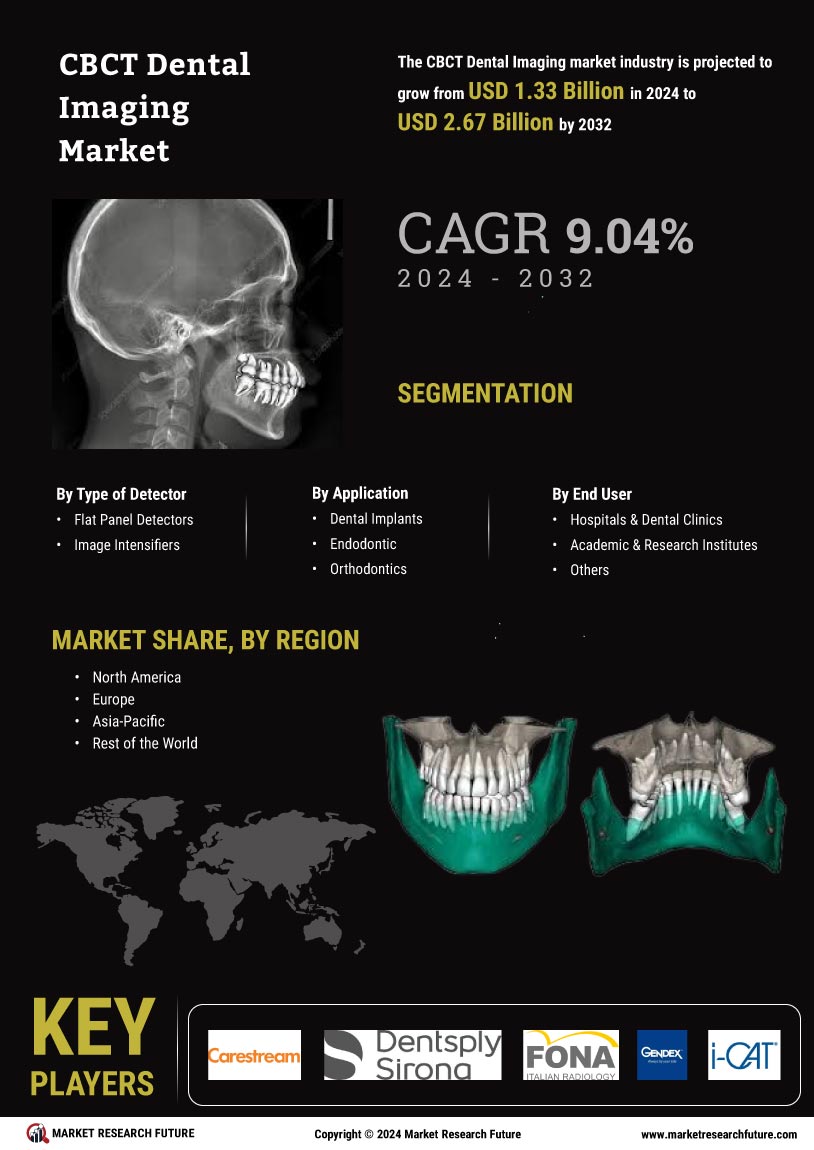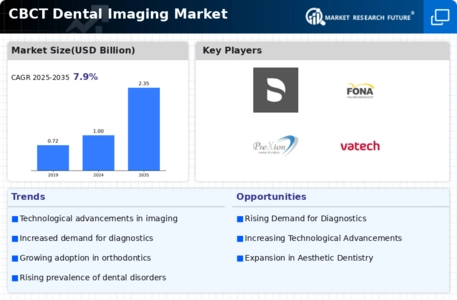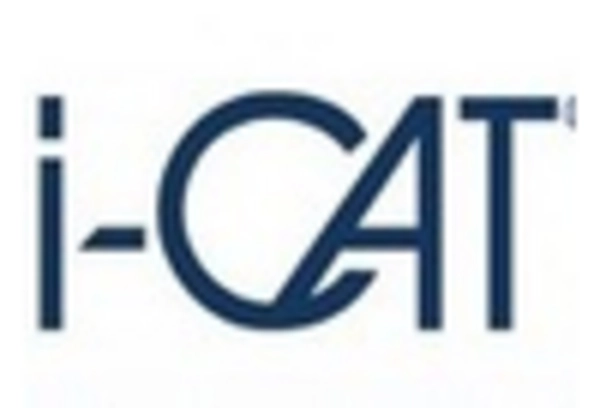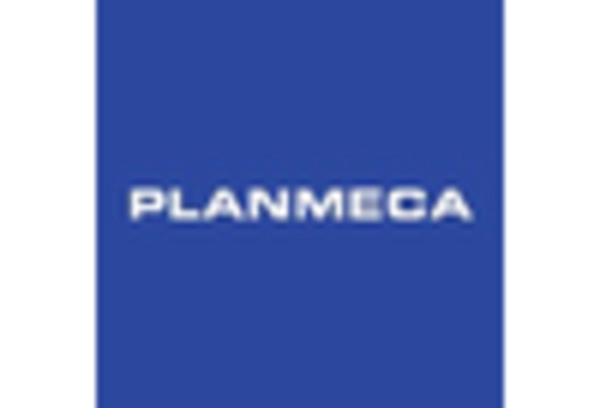Market Growth Projections
The Global CBCT Dental Imaging Market Industry is projected to experience substantial growth over the next decade. With a market value of 1 USD Billion in 2024, it is expected to reach 2.35 USD Billion by 2035, reflecting a robust CAGR of 8.07% from 2025 to 2035. This growth trajectory indicates a strong demand for advanced imaging solutions, driven by factors such as technological advancements, increasing awareness of oral health, and the expansion of dental practices. The market's evolution is likely to be shaped by ongoing innovations and the integration of CBCT technology into routine dental care.
Technological Advancements
The Global CBCT Dental Imaging Market Industry is experiencing a surge in technological advancements that enhance imaging quality and diagnostic capabilities. Innovations such as improved detector technology and advanced software algorithms are enabling practitioners to obtain high-resolution images with reduced radiation exposure. For instance, the introduction of 3D imaging techniques allows for better visualization of complex dental structures, which is crucial for accurate diagnosis and treatment planning. As these technologies become more accessible, the market is projected to reach 1 USD Billion in 2024, indicating a growing reliance on sophisticated imaging solutions in dental practices.
Expansion of Dental Practices
The expansion of dental practices, particularly in emerging markets, is a significant driver of the Global CBCT Dental Imaging Market Industry. As dental clinics proliferate, there is a corresponding need for advanced imaging solutions to support a wider range of services. New dental practices are increasingly incorporating CBCT technology to enhance their diagnostic capabilities and attract more patients. This trend is particularly evident in regions with growing populations and increasing disposable incomes, where access to dental care is improving. The market is anticipated to grow at a CAGR of 8.07% from 2025 to 2035, reflecting this expansion.
Rising Awareness of Oral Health
The Global CBCT Dental Imaging Market Industry is benefiting from a growing awareness of oral health among the global population. Educational campaigns and initiatives by health organizations are emphasizing the importance of regular dental check-ups and advanced diagnostic tools. As individuals become more informed about the link between oral health and overall well-being, the demand for advanced imaging technologies, such as CBCT, is likely to increase. This heightened awareness is expected to drive market growth, as practitioners adopt these technologies to meet patient expectations and improve diagnostic accuracy.
Increasing Demand for Minimally Invasive Procedures
There is a notable increase in the demand for minimally invasive dental procedures, which is significantly influencing the Global CBCT Dental Imaging Market Industry. Patients are increasingly favoring treatments that reduce recovery time and discomfort, leading to a rise in procedures such as dental implants and orthodontics. CBCT imaging plays a vital role in these procedures by providing precise anatomical information, which aids in treatment planning and execution. This trend is expected to contribute to the market's growth, with projections indicating a rise to 2.35 USD Billion by 2035, reflecting the evolving preferences of patients and practitioners alike.
Regulatory Support for Advanced Imaging Technologies
Regulatory bodies are increasingly supporting the adoption of advanced imaging technologies in dentistry, which is positively impacting the Global CBCT Dental Imaging Market Industry. Initiatives aimed at streamlining the approval processes for new imaging devices and promoting their use in clinical settings are encouraging dental practitioners to invest in CBCT systems. This regulatory support not only enhances patient safety but also fosters innovation within the industry. As a result, the market is likely to experience sustained growth, driven by the increasing integration of CBCT technology into standard dental practices.

















Leave a Comment